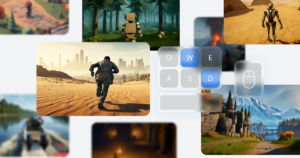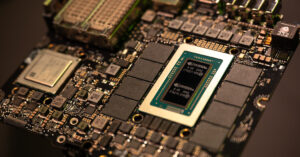DeepMind Announces Plans to Utilize AI Models for Physical Robots

Google’s DeepMind and the Future of AI-Powered Robotics
Google’s DeepMind, known for its advanced AI technologies, has announced plans to integrate artificial intelligence models into physical robots. This development marks a significant step forward in the field of robotics, expanding the capabilities of machines to perform complex tasks more efficiently.
What is DeepMind?
DeepMind is a subsidiary of Google that focuses on artificial intelligence research and applications. Established in 2010 and acquired by Google in 2015, DeepMind aims to develop AI technologies that can benefit various sectors, including healthcare, energy, and now, robotics. The company is renowned for its groundbreaking projects like AlphaGo, which defeated a world champion Go player, and advancements in protein folding through its AlphaFold program.
The Intersection of AI and Robotics
Understanding AI Integration
Artificial intelligence enhances physical robots by enabling them to learn from their environment and improve their performance over time. With AI models, robots can process vast amounts of data, recognize patterns, and make decisions autonomously. This dynamism allows robots to adapt to various settings, whether in factories, homes, or outdoor environments.
Current Applications of AI in Robotics
Manufacturing: AI-driven robots are increasingly used in assembly line production. They can perform precise tasks, increase efficiency, and reduce the likelihood of human error.
Healthcare: Robotic systems powered by AI can assist in surgeries, help in rehabilitation, and care for patients by monitoring their health status.
Agriculture: Smart robots equipped with AI can analyze crop health, monitor soil conditions, and automate planting and harvesting processes.
- Logistics: Autonomous delivery drones and warehouse robots are changing how goods are transported and stored, optimizing supply chain operations.
DeepMind’s Vision for Robotics
Advanced Learning Algorithms
DeepMind plans to utilize sophisticated learning algorithms that allow robots to execute tasks more intelligently. This includes reinforcement learning, where robots learn from trial and error, improving their performance with each attempt.
Collaboration with Industry Partners
DeepMind is focusing on partnerships with various industries to implement its AI technology in real-world applications. Collaborating with companies involved in logistics, agriculture, healthcare, and manufacturing, the goal is to create tailored solutions that address specific challenges each sector faces.
Future Prospects of AI-Powered Robots
Enhanced Interaction with Humans
One of the most exciting prospects of integrating AI with robotics is the potential for more natural interactions between robots and humans. As robots become more adept at understanding human needs and behaviors, they can assist in everyday tasks, making life easier and more efficient.
Safety and Reliability
With the integration of AI, the safety and reliability of robots are expected to improve significantly. Advanced sensors and algorithms will allow robots to navigate complex environments safely, reducing accidents and operational hiccups.
Economic Impact
The rise of AI-powered robots may lead to significant economic shifts. While there are concerns about job displacement, AI and robotics can create new job opportunities in tech and maintenance fields. Additionally, increased efficiency can lead to lower production costs and potentially lower prices for consumers.
Key Takeaways on DeepMind’s Robotics Initiative
- Google’s DeepMind is leveraging AI to enhance the capabilities of physical robots.
- The integration aims to improve machine learning, allowing robots to adapt to their environments.
- Collaborations with various industries are crucial for successful implementation.
- The future may see robots with improved human interaction capabilities, better safety measures, and significant economic impacts.
In summary, Google’s DeepMind is at the forefront of merging AI with physical robotics, promising a transformative change in how we interact with machines and the potential applications across numerous industries. The implications of this technology are vast and could fundamentally reshape how we approach both work and daily life.






